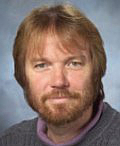Application-driven Co-Design: Using Proxy Apps in the ASCR Materials Co-Design Center
Category
Published on
Abstract
Computational materials science is performed with a suite of applications that span the quantum mechanics of interatomic bonding to the continuum mechanics of engineering problems and phenomenon specific models in between. In this talk, we will review this suite and the motifs used in each of the codes with particular emphasis on how the proxy apps are used for exascale co-design.
Bio
 Jim Belak has been a staff physicist in Condensed Matter and Materials Division since 1989. He did his undergraduate study at Rutgers University and graduate work at Colorado State University. His thesis work with Professors Richard D. Etters and Richard A. LeSar was on "Internal Vibrations and Phase Diagram for a Model of Condensed Nitrogen." After a post-doctoral appointment with Professor Mark Robbins at Johns Hopkins University, Jim joined LLNL and used molecular simulation to study interfacial tribology in support of LLNL's Precision Engineering Program. Jim has worked to apply materials simulation (molecular dynamics, Monte Carlo, microstructure evolution, and continuum mechanics) to quantify dynamic material behavior during shock wave loading. His current work focuses on the microscopic origins of dynamic fracture in ductile metals using both theoretical and experimental techniques.
Jim Belak has been a staff physicist in Condensed Matter and Materials Division since 1989. He did his undergraduate study at Rutgers University and graduate work at Colorado State University. His thesis work with Professors Richard D. Etters and Richard A. LeSar was on "Internal Vibrations and Phase Diagram for a Model of Condensed Nitrogen." After a post-doctoral appointment with Professor Mark Robbins at Johns Hopkins University, Jim joined LLNL and used molecular simulation to study interfacial tribology in support of LLNL's Precision Engineering Program. Jim has worked to apply materials simulation (molecular dynamics, Monte Carlo, microstructure evolution, and continuum mechanics) to quantify dynamic material behavior during shock wave loading. His current work focuses on the microscopic origins of dynamic fracture in ductile metals using both theoretical and experimental techniques.
Credits
This work was preformed under the auspices of the U.S. Department of Energy by LLNL under Contract DE-AC52-07NA27344 and supported by DOE/ASCR. Abstract #LLNL-PRES-529855.
Sponsored by
Cite this work
Researchers should cite this work as follows:
Time
Location
Birck Nanotechnology Building, Room 1001, Purdue University, West Lafayette, IN